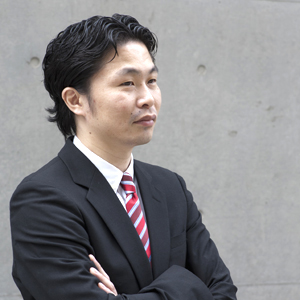ELSI Blog
30 Masashi Aono: ELSI's Man of the Month

If there was a calendar with a different ELSI member featured every month (not sure who would actually want such a calendar but anyway), October would be Masashi Aono's month. In the beginning of this month, his research proposal on "Amoeba-inspired Computing Paradigm: Ultrahigh Efficiency Problem Solving Utilizing Spatiotemporal Dynamics" was selected to participate in Japan Science and Technology Agency's program PRESTO (Precursory Research for Embryonic Science and Technology.) Later this month, he will also make an appearance in the "Mad Scientist" column of the popular publication "TV Bros", which is equivalent to his debut into the mainstream public of Japan.
I wanted to ask him about his research that earned him the prestigious PRESTO grant. Going to his office feels a little bit like visiting a second-hand kitchen outfitting operation. The hallway leading to his office and the inside of it are lined with stainless steel counters, cupboards with see-through doors, hood, glassware, and other mysterious industrial machinery, all of it covered in plastic ready to be moved. Way in the back of this room stuffed with equipment is a space carved out for his office. "I have no more space," laments Aono, almost passing as a business owner who has mismanaged his inventory. But the reality here is, he is in charge of setting up ELSI's 'Chemical Evolution' lab, its space currently being built in the temporary ELSI building. It must be exciting to be involved in setting up a lab in the initial stages, as most people inherit lab space designed by someone else.
If you are looking for someone interdisciplinary, Aono fits that description. His PRESTO project has him working on the development of innovative nano-electronics through collaboration among material, device and systems research. This project, as you will read below, brings him full circle to his ELSI research on the origins of life.
The aim of Aono's selected research is to develop highly versatile nanoarchitectonic computers by looking at the tremendous computational powers of biological systems for clues to a paradigm shift in computation. He formulated a new computational model, the "amoeba model", inspired by spatiotemporal oscillatory dynamics of a primitive single-celled amoeboid organism (Physarum polycephalum) that exhibits sophisticated computing capabilities in adapting to its environment efficiently. The amoeba model can be used to solve highly complex combinatorial optimization problem, the satisfiability problem (SAT), at a speed that is dramatically faster than one of conventionally known fastest stochastic local search methods. This has application implications in a number of socially important ways such as in artificial intelligence, information security, and protein structure prediction. By implementing the amoeba model using various nano devices, Aono aims to systematize a methodology for developing ultra-compact and ultra-low power-consuming devices with ultra-fast computational speed.
How does this relate to ELSI? To elucidate ELSI's research question of how life originated in the early Earth, a systematic experimental study is carried out to explore how proteins with catalytic function and self-replicating RNA appeared under the early Earth's environmental conditions. Protein and RNA are assembled as long sequences of polymerized amino acids and nucleotides respectively, but the number of combinations in the sequences is enormous. Aono believes that the advantageous computational capabilities of the amoeba model will be useful for exploring broad sequence spaces to understand how proto protein and proto RNA emerged,leading to a significant narrowing of the experimental conditions. This will greatly accelerate the origins of life study.
Aono is the organizer of Study Group 2 whose focus is 'Prebiotic Chemistry.' When he looks at the timeline of the birth of the Earth (4.6 Gya) and the birth of life (approximately 4.0 Gya), he suspects that 600M years is too short of a period for living organisms to have emerged from non-living chemical compounds by a chance occurrence. If there was a 2 Gy period between the birth of single-cell organisms to the appearance of multi-cellular organisms, 600M years again seems too short of a time for the emergence of living organisms from non-living compounds. Aono suspects that there might have been some mechanism or dynamics in the early Earth environment which accelerated and allowed for the emergence of life in this short 600M span. His goal in Study Group 2 is to clarify this accelerating dynamic and to reproduce this similar process experimentally by ELSI's midterm evaluation, which is only three years from now!
From looking at amoeba for clues to developing devices with ultra-fast computational abilities which would then be used to greatly narrow the experimental conditions for understanding how protein and RNA appeared in the early Earth environment, Aono has his hands full in seemingly separate but actually connected research topics.
For more information on Masashi Aono, please visit his ELSI personal page.











